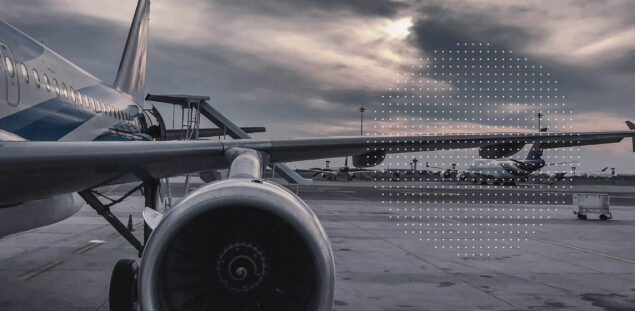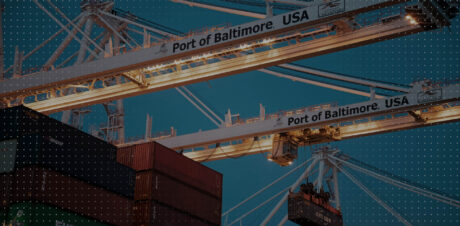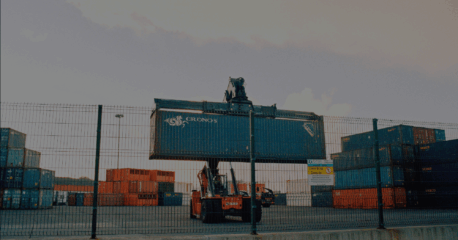The commercial aviation industry relies on a global supply chain. The Boeing 737 might be American made, but approximately 700 suppliers across the globe support production of this aircraft and its roughly 2 million separate parts. Beyond the building of new aircraft, aviation component manufacturers supply parts and materials for the maintenance and repair of existing aircraft.
Vulnerabilities in this supplier-heavy environment cause impacts ranging from regulatory violations and delays in aircraft launches to potential accidents due to fake parts.
Let’s take a look at three key vulnerabilities faced by commercial aviation manufacturers and how insight from corporate and trade data can help mitigate risk from these vulnerabilities.
Vulnerabilities in the aviation supply chain
Counterfeit and unapproved parts
While the aviation industry is laser-focused on safety, parts distribution is essentially self-regulated, with intermediaries circulating hundreds of thousands of parts each year between manufacturers, airlines, and repair stations. The Department of Transportation (DoT) and the Federal Aviation Administration (FAA) are not required to track aviation imports or their associated supply chains. Instead, the government relies on aviation manufacturers to oversee their suppliers and ensure product adherence to design requirements.
The effort to vet a supply chain that ranges from tier 1 suppliers of major subassemblies such as engines to tier 4 suppliers providing raw materials is not always successful. Aircraft parts supplier AOG Technics has been charged by the UK with fraudulent trading after incidents of aircraft grounding due to concerns over parts that AOG Technics supplied. The charges allege AOG Technics defrauded customers by falsifying documentation related to the origin, status, or condition of aircraft parts.
Limited or sole-source suppliers
Manufacturers may have limited vendors qualified or approved to supply a material. Limited or sole-source suppliers make manufacturers more vulnerable to risks from production failures, geopolitical instability, and trade wars.
Delays from sole-source suppliers have real impacts to aircraft delivery: Airbus is pushing back the entry-into-service date of its A350 freighter due to supply chain challenges from its aerostructures supplier.
For aviation manufacturers, replacing a sole source supplier is uniquely challenging. Developing and testing new aviation parts can cost over $1 million and require years to complete. These time and money investments are averaged over relatively few aircraft, making the investment more expensive and risky per part.
Economic, geopolitical, and regulatory forces
President Trump’s tariff enactments have U.S. importers scrambling to adjust by nearshoring and reshoring, diversifying supplier networks, and other tactics. The aviation industry is waiting to see how semiconductors will be impacted by the tariffs, since they play a key role in control and monitoring, data processing, and communication.
Sanctions imposed by the U.S. and its allies following the Russian invasion of Ukraine restrict the export of aircraft parts to Russia and any jurisdictions that pose a risk of transshipment. Russia’s ability to continue the war relies on maintaining access to foreign sources of funds and equipment — and it has evolved its tactics throughout the war to do so.
Manufacturing aviation components often requires rare earth metals and elements. Supply chain experts interviewed by the Department of Transportation (DoT) Office of Inspector General said that U.S. environmental regulations limit the mining and processing of these metals and elements. Consequently, manufacturers often depend on foreign sources for obtaining the materials. Shortages of raw materials lead to shortages of the components these materials are used for, such as engines, and ultimately delay the final assembly of finished aircraft. For example, the war in Ukraine has negatively impacted the supply of titanium which, in turn, has impacted the availability of essential components like forgings and castings.
The solution: visibility and transparency beyond tier 1 suppliers
Overcoming these vulnerabilities requires insight into an organization’s complete supply chain. However, given the number of aviation suppliers and parts per aircraft, achieving visibility across the supply chain is no small task.
Aviation manufacturers must understand not only their direct suppliers, but those supplier’s sub-tier networks as well. This means obtaining visibility beyond tier 1 to tier 2 and further down the chain. Risks within sub-tier supply chains can result in delivery delays, regulatory risk, reputation impact and, most consequentially, catastrophic failure. Mapping and managing sub-tier supply chains is more than a best practice for aviation manufacturers.
>> Discover how corporate data enhances supply chain visibility <<
Using Sayari to combat vulnerabilities in the supply chain
Sayari’s comprehensive data empowers aviation manufacturers to foster an agile supply chain to combat vulnerabilities.
Battling counterfeit and unapproved parts
Corporate and trade data within Sayari provides visibility into third parties, allowing manufacturers to confidently vet and accredit suppliers to help meet FAA/European Union Aviation Safety Agency (EASA) parts traceability requirements (e.g., AC 00-56).
The AOG Technics case cited previously highlights the critical need for this robust supplier validation. Even though AOG Technics was accredited, red flags like inconsistencies in company information and gaps in trade records might have been identified during initial vetting. Data available through Sayari reveals a pattern of suspicious address changes by AOG Technics between 2017 and early 2023, coinciding with their fraudulent activity from 2019 to 2023. This data could have triggered greater due diligence and scrutiny, thereby avoiding use of the company as a supplier.
Mitigating risk from limited or sole-source suppliers
Sayari helps manufacturers map their entire supplier network beyond tier 1 to illuminate hidden risks such as sole source and limited suppliers or supplier(s) concentrated in a single geography. Utilizing over 1.7 billion trade records, Sayari allows importers to search for reliable alternative suppliers. This is a crucial first step in the extended development and test of aviation parts.
Navigating economic, geopolitical, and regulatory forces
In a volatile tariff environment, manufacturers need fast and reliable ways to understand their supply chains and identify alternative sourcing options to mitigate tariff exposure. Sayari Map’s Tariff Feature enables instant identification and mapping of tier 1 suppliers exposed to active tariff regimes by filtering based on “ships from” locations rather than corporate headquarters. This provides precise visibility into supplier relationships that directly affect landed costs under current tariffs. The solution extends visibility beyond tier 1 to upstream suppliers (t2–t5) using “ships from” and “ships to” filters, allowing organizations to identify hidden dependencies and tariff exposure throughout the supply chain.
>> Learn how Sayari facilitates the search for alternate suppliers <<
Global regulations require the aviation industry to thoroughly investigate potential indirect sales to sanctioned parties. Sayari Graph enables aviation manufacturers to quickly generate filterable, product-specific downstream supply chains based on real shipping data to enhance monitoring and due diligence processes while ensuring adherence to export control laws and sanctions. Graph delivers complete citations for all findings, enabling businesses to easily substantiate their due diligence.
Dependence on foreign sources for raw materials necessary for manufacturing aviation parts contributes to supply chain fragility. These suppliers are often located in conflict areas or the countries of geopolitical rivals. Mitigating supply chain risk requires manufacturers to look for opportunities to expand supplier networks and partner with friendly nations. Beyond delivering support to find alternate suppliers, Sayari’s risk factors help compliance teams identify supplier red flags — such as sanctions — and conduct deeper due diligence.
To learn more about how Sayari’s comprehensive corporate and trade records help build resilient supply chains for aviation manufacturers, read our report Sayari for Aerospace Vendor Vetting and Accreditation.



